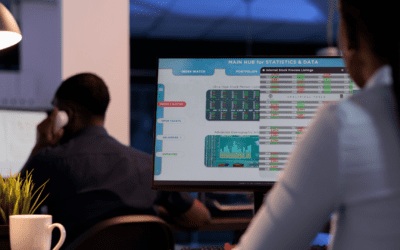When talking about a brand, it’s instinctive to immediately think of a name, a logo, a color, and a slogan. However, it’s important to take a step back and consider the concept of a brand from a broader perspective. In doing so, we realize that the logo is just the graphic representation of a much larger and more complex set of elements that must be organic, structured, reasoned, built and maintained over time in order to create and maintain value for our company, following a precise plan.
There are dozens if not hundreds of definitions of a brand. For the purposes of this post, we can think of a brand as the collection of what a company wants to be and become, its value proposition to customers, its values, and its way of communicating and interacting.
Coming up with a name and designing a logo can be an activity that takes anywhere from a few minutes to a few weeks of work. Building and consolidating a brand, on the other hand, requires years, thorough preliminary work and constant attention over time.
Starting from the basics
Every successful project is built on solid foundations. Therefore, we dedicate the necessary time to define the Vision and Mission of our new brand. It won’t be time wasted: formalizing them in precise statements will help us define them clearly and evaluate their coherence and solidity.
All the work we will do on our brand will stem from the vision and mission and will be inspired and coordinated by them.
We define vision as the dream, the ultimate goal that the brand aims to achieve (for example, ensuring the survival of the human species), and mission as the ways in which it intends to accomplish the vision (for example, by studying interplanetary transportation means and terraforming tools).
Choosing the positioning
Once we have clearly stated our vision and mission, we are ready to define the market positioning of
our new brand. We proceed with:
- Market study: defining the sector, composition and level of demand, composition and level of supply, and existing competitors.
- Target definition: socio-demographics, expressed needs, latent needs, segmentation, purchasing behaviours, and values.
- Value proposition: the promise, the brand’s main delivery to customers, the unique selling proposition, and complementary deliveries.
- Values that inspire and guide the actions of the brand.
- Characteristics and “personality” of the brand: communication tone, methods of interaction with customers, suppliers, and prospects, feeling to be conveyed.
Defining name, logo, and tagline
This is the moment when we can work to define the name, logo, payoff, graphic and photographic elements that best express and communicate our brand: vision and mission, values, personality, delivery. Properly identifying the target and studying the competition will allow us to use the language that is most suitable for our target buyer personas, and strike the right balance between originality and usage of the consolidated communication codes of the industry.
Launch
The brand is now ready for launch in the market. We move on to defining the commercial offers and the communication plan. The latter, in detail, starting from the objectives and then developing it for the target audience, media and messages to be conveyed.
The objectives assigned to the plan will influence the growth and evolution of the brand: a plan based on generating awareness, for example, will lead to rapid growth in the brand’s recognition, while one aimed at generating short-term revenue will have a greater impact on sales, at the cost of a reduced effect on building the brand value in the long term.
The results to monitor
It is essential to always keep the brand’s health under control and take action to ensure it becomes and remains a key asset for the company. We must be able to measure the results of institutional communication campaigns. However, short-term sales alone are not necessarily an indicator of a brand’s value or the success of an investment campaign in it.
There are many questions we must answer:
- How well-known is the brand?
- Is it being talked about? How and in what context?
- How much do customers, both current and potential, like it?
- Are its values understood, appreciated, and recognized?
- Does its actual positioning match the desired positioning?
- Are there risks of overlap with competitors, or opportunities for repositioning or extension?
- Are there points in the conversion funnel (awareness – consideration – purchase – loyalty – advocacy) that we can improve upon?
Solutions for measuring results
Answering these questions is difficult and requires lengthy and expensive research (interviews, consumer groups or panels, offline or even online), or the use of different online tools that are specialized in evaluating some aspects, primarily sentiment and awareness. Market research also suffers from some intrinsic limitations due to:
- Sample size
- Cognitive biases
- The situation’s influence on the interviewee
However, the development of artificial intelligence technologies has given us the opportunity to use a new, powerful tool: RTBH.ai (Real-Time Brand Health). RTBH.ai can finally overcome cognitive biases and sample limitations. It’s monitoring of the brand’s main parameters is:
- Continuous
- Complete
- Rigorous
- Quantitative
Its one-of-a-kind proprietary artificial intelligence engine combines:
- Artificial intelligence
- Machine learning
- Cognitive science
- Data Science
- Social network analysis
RTBH.ai reads, interprets, and re-elaborates in real-time millions of posts, articles, opinions, and discussions published on the internet. Thanks to its proprietary “Brand Health” indicator, it can scientifically and precisely measure the brand’s and its competitors’ health by valuing all the parameters and details. It also evaluates sentiment, values, positioning with threats and opportunities, and the performance of the conversion funnel at all its stages.
It rigorously detects sales funnel performance from awareness to consideration, and loyalty to advocacy. It presents data in a clear, numerical, and rigorous format, providing graphical representations and trends accompanied by RTBH.ai experts’ evaluations.



